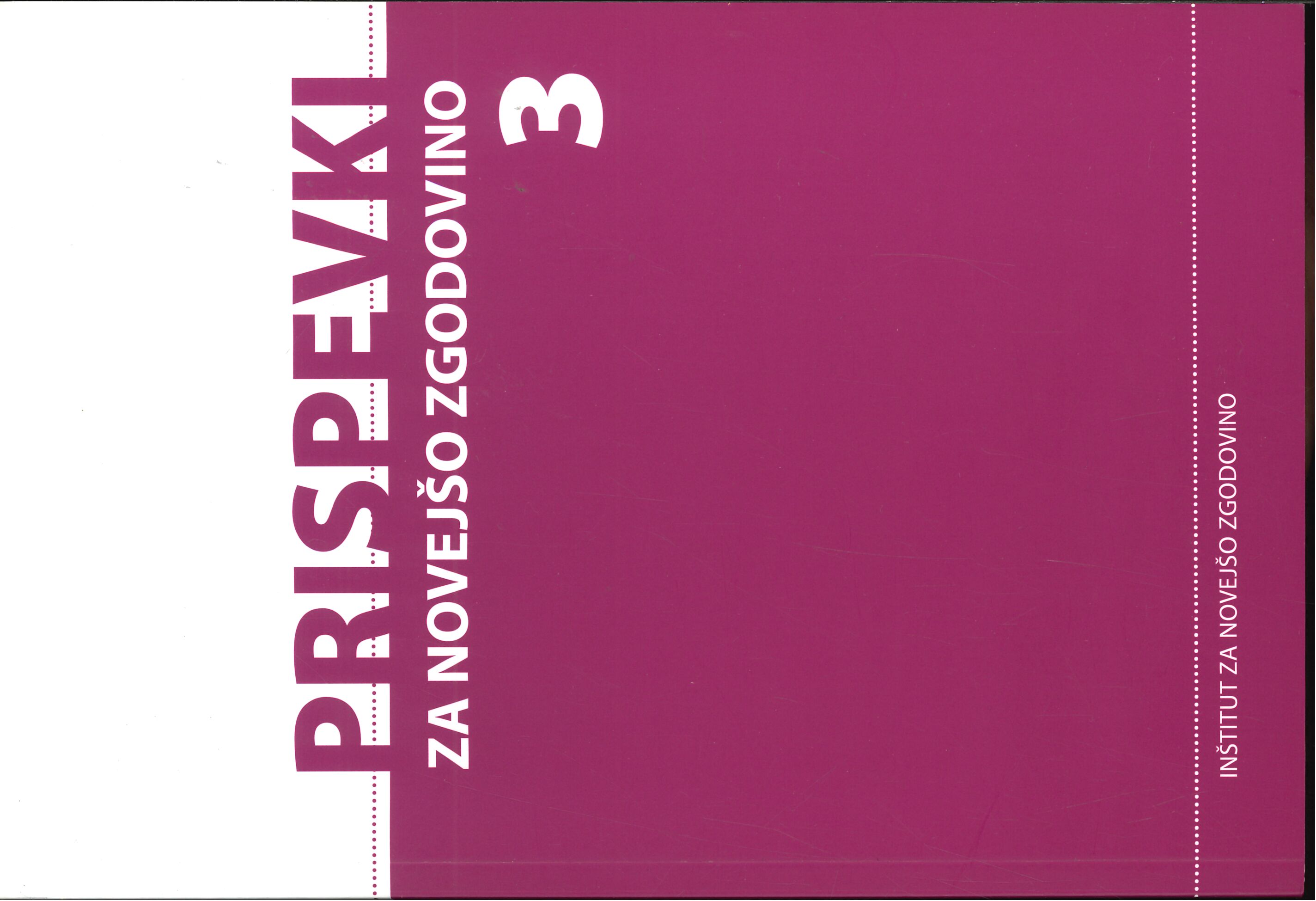Family Networks and the “Generational Key” in the Renewed Approaches of Social Questioning of the Slovak Elite at the Beginning of the 20th Century.
DOI:
https://doi.org/10.51663/pnz.57.3.07Ključne besede:
Slovakia, cultural history, Kingdom of Hungary, Czech-Slovak mutualityPovzetek
Until the 1890s, most public affairs surrounding the Slovak elites were managed from the small town of Turčianský Sväty Martin in Turiec County, and based on a long-lasting programme drawn up in 1861 that mainly focused, in a classical approach from the late 1840s, on language and national individuality of the Slovaks vis-à-vis both Hungarians and Czechs.
A shift occurred from the early 1900s onwards, deeply modifying the main axis of public and social activities of the educated Slovak milieu. This shift coincided with an emerging new generation influenced by foreign experiences observed personally during their studies in the Empire – and in the Czech Lands especially – or abroad. It was also based on long-standing family ties and local/regional solidarities. This paper studies how and to what extent these factors deeply renewed the approach of social reflection in the mostly Slovak Counties of the Kingdom of Hungary during the first decade of the 20th century.
Literatura
Jean-Pierre AZÉMA, “La clef générationnelle” [The generational key], Vingtième Siècle, 22(1989): 3-10.
František Bokes, Dokumenty k slovenskému národnému hnutia, I [Documents on the Slovak National Movement. 1st volume], Bratislava, SAV, 1962.
Samuel Cambel, Štátnik a národnohospodár Milan Hodža 1878-1944 [Statesman and economist Milan Hodža. 1878-1944], Bratislava, Veda, 2001.
Zdenko Ďuriška, Medzi mlynmi a bankami. Dejiny rodu Makovickovcov [Between mills and banks. The history of the Makovický family], Martin: SGHS, 2007.
Zdenko Ďuriška, Pálkovci. Príbeh rodu garbiarských podnikateľov z Liptova [The Pálkos. History of a Liptov tanneries family, Martin, SGHS, 2013.
Bruce M. Garver, The Young Czech Party 1874-1901. The Emergence of a Multi-party System, New Haven: Yale University Press, 1978.
Hana Gregorová, Spomienky [Memories], Bratislava, Tatran, 1979.
Roman Holec, Tragédia v Černovej a slovenská spoločnosť [The Tragedy of Černová and Slovak society], Martin, Matica slovenská, 1997.
Roman Holec, Tatra banka v zrkadle dejín [The Tatra bank in the mirror of history], Bratislava, AEP, 2007.
Štefan Horváth, Ján Valach (ed.), Peňažníctvo na Slovensku do roku 1918 [Finances in Slovakia until 1918], Bratislava, VTEL, 1975.
Marián Hronský, “K politickému profilu generácie okolo časopisu Prúdy (Prúdistov) (1910-1914)” [About the political profile of the generation around the review Prúdy (1909-1914)], HČ, 23 (1975): 509-531.
Ján Hrušovský, Starý Martin v živote a ľudoch [Old Martin in its life and people], Martin, 1947.
Štefan Janšák, Život Štefana Fajnora [The Life of Štefan Fajnor], Bratislava: Biblioteka, 1933
Jiří Kořalka, Češi v habsburské říši a v Evropě 1815-1914 [The Czechs in the Habsburg Empire and in Europe], Prague, Argo, 1996.
Jan Křen, Konfliktní společenství. Češi a Němci 1780-1918 [Conflicting Societies. Czechs and Germans 1780-1918], Prague: Academia, 1990.
Ľubomír Lipták (dir.), Politické strany na Slovensku (1860-1989) [The political Parties in Slovakia (1860-1989)], Bratislava: Archa, 1992.
Julius Markovič, Nitrianský politický trestný proces: politická úvaha [The Nitra political trial: political reflexion], Turč. Sv. Martin, 1903.
Miroslav Pekník (ed.), Ferdinand Juriga. Ľudový smer slovenskej politiky [Ferdinand Juriga. The popular direction of Slovak politics], Bratislava: Veda, 2009.
Milan Podrimavský, “Organizácia Slovenskej národnej strany v rokoch 1900-1914” [The organization of the SNS in the years 1900-1914], Historický časopis, 25 (1977): 193-194.
Milan Podrimavský, Slovenská národná strana v druhej polovici 19. storočia [The Slovak National Party in the second half of the 19th century], Bratislava: SAV, 1983.
Jan Rychlík (ed.), Korespondence T. G. Masaryk – slovenští veřejní činitelé [Correspondence T. G. Masaryk – Slovak public activists] (Prague : Masarykův ústav AV ČR, 2007).
Jean-François Sirinelli, “Génération et histoire politique” [Generations and political history], Vingtième Siècle, 22(1989).
Michal Stehlík, Češi a Slováci 1882-1914. Nezřetelnost společné cesty [Czechs and Slovaks 1882-1914. The indistinct nature of common paths], Prague: Togga, 2009.
Slovenské národné zhromaždenie v Turčianskom Sv. Martine 1861 [The 1861 Slovak national assembly of Turčianský Sväty Martin], T. S. Martin: Matica slovenská, 1941.
Ľudovít Šenšel, Pätdesiat rokov Tranoscia. 1898-1948 [50 years of Tranoscius], Liptovský Mikuláš, 1948.
Vavro Šrobár, “Počiatky slovenského obrodenia” [The beginnings of the Slovak awakening], in Sborník slovenskej mladeže [Slovak youth collection], 1909.
Ivan Thurzo, Medzi vrchmi a na rovine [Between the hills and in the plains], Bratislava: Tatran, 1987.
Ivan Thurzo and Alena Bartlová, Slovenský Perikles [The Slovak Pericles], Bratislava: Vydavateľstvo Spolku slovenských spisovateľov, 2008.
Vladimír Zuberec, “Formovanie slovenského národného hnutia v rokoch 1900-1918” [The formation of the Slovak national movement, 1900-1918], Historický časopis, 20 (1972): 205-246.
“Z korešpondencie predsaviteľov českého a slovenského národného hnutia na prelome 19. a 20. storočia” [From the correspondence between Czech and Slovak national movement at the turn of the 20th century], HČ, 17 (1969): 270-284,
Michel Winock, L’Effet de génération. Une brève histoire des intellectuels français [The generational effect. A brief history of French intellectuals], Paris: Thierry Marchaisse, 2011.
Objavljeno
Številka
Rubrika
Licenca
Avtorji prispevkov, objavljenih v tej reviji, soglašajo z naslednjimi pogoji glede avtorskih pravic:
- Avtorji ohranijo avtorske pravice, reviji pa odobrijo pravico do prve objave. Delo se hkrati zaščiti z licenco za prosto uporabo avtorskih del (Creative Commons Attribution License), ki drugim osebam omogoča deljenje dela ob priznanju avtorstva in prve objave v tej reviji.
- Avtorji lahko sklenejo ločene dodatne pogodbene dogovore za neizključno distribucijo različice dela, objavljene v reviji, (npr. oddaja v institucionalni repozitorij ali objava v knjigi) z navedbo, da je bilo delo prvič objavljeno v tej reviji.
- Pred postopkom pošiljanja in med njim lahko avtorji delo objavijo v spletu (npr. v institucionalnih repozitorijih ali na svoji spletnih strani), k čemer jih tudi spodbujamo, saj lahko to prispeva k plodnim izmenjavam ter hitrejšemu in obsežnejšemu navajanju objavljenega dela (glej The Effect of Open Access).


